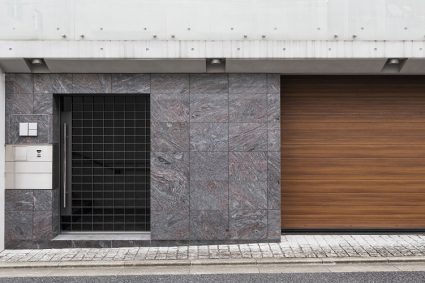
Most garage doors come with weather seals, but with time the rubber or vinyl deteriorates and loosens the garage door.
The garage floor may also suffer some damage and could result in the door no longer fitting in its frame. This can lead to substantial problems as an ill-fitting garage door lets dust, dirt, water, pests, insects, rodents, and several pollutants inside your house.
An effective way to fix the issue is weatherproofing the garage door, so here are 5 different ways you can do it.
5 Ways To Weather-Seal A Garage Door
1. Bottom Seal
This type of rubber seal is fixed right at the bottom of the garage door that molds itself to the floor of the garage, thus sealing it in place. However, it may wear out over time and will have to be replaced.
If the seal is fixed in place with screws, those are to be removed and fitted again to fix the new strip. In some cases the door has a channel at the bottom in which the T-strip or U-strip gasket slides in.
2. Threshold Seal
Threshold seals are attached to the garage floor right where the garage door sits. A strip of rubber or vinyl is measured to fit the garage door from end to end and this strip is then installed on the floor with glue and screws.
Bottom seals and threshold seals can also be used together, preventing water, dust, and dirt from entering the garage.
3. Door Stop Weatherstripping
Depending on the fitting issue, your garage door might need sealing on its sides. For this, the door jamb that is attached to the door frame on the walls on both sides is affixed with rubber or vinyl seal.
The attachment process is similar to a threshold seal, as a weatherstrip is fixed with screws on the jamb while the flap rests on the face of the door.
4. Top Seal
This is a tricky area to work on due to the way the garage door retreats into the top of the door frame when opened. But with the help of some double sided tape, a rubber or brush type seal is installed at the top between the door and the frame.
5. Panel Weatherstripping
V-shaped panel weatherstripping or V-seals are used when there are cracks in the panels of the garage door. The cracks can prove to be detrimental over time if they aren’t covered and sealed properly.
Firstly the length of the cracks is measured and then V-seals are cut according to the same measurement. The best part is that V-seals are self adhesive, and can be simply pasted on the cracks.
Conclusion
All kinds of insects, rodents, and other unwanted elements can easily find their way in from the gaps caused by faulty seals. Therefore it becomes important to ensure that the garage door is properly weather-sealed.
You can opt for any of the listed seals or a combination of seals for this purpose to ensure complete safety at all times. So, contact a garage door expert for weatherproofing without delay!










